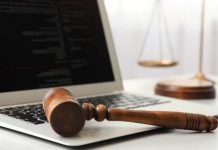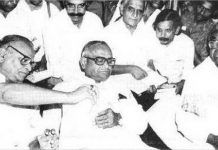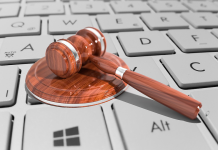This article has been written by Oishika Banerji of Amity Law School, Kolkata. This article provides a detailed analysis of the pros and cons of each mode of the court hearing with respect to the Delhi High Court and district courts that have resumed physical hearing completely.
Table of Contents
Introduction
With the COVID-19 pandemic taking a toll on the majority of professions, enclosing professionals within four walls of their house forcing them to be connected with electronic devices whether in a laptop or a computer system. The legal profession has seen its ups and downs with every court of the nation resorting to online means for hearing of cases scheduled before it as remedying injustice even when the country and the population face backlashes from a deadly virus, cannot be avoided. With more than 20 months being ruled by this pandemic and things slowly getting back to the new normal, the Delhi High Court and the district courts have decided to resort back to a full-fledged physical hearing from 22nd November 2021.
A notice dated 29th October 2021 was published on the official website of the Delhi High Court that declared that there shall be a complete resumption of physical courts from 22nd November 2021. This step taken by the Delhi High Court has raised the debates as to which mode of the hearing was better and convenient for legal practitioners and professionals and as to what should be adopted in the coming future. This article intends to highlight the same.
Physical mode of hearing vis a vis online mode of hearing in courts
While addressing the students of the NALSAR University of Law, Hyderabad in a webinar organized by them, Justice D.Y. Chandrachud, who is also the Chairman of the e-committee of the Supreme Court of India had said that “virtual courts cannot replace open-court hearings, which are the “backbone” of the judicial system. They can’t be used in place of open courts or as a panacea.” In that very speech, Justice Chandrachud made a positive reference to technology in shaping the career of young attorneys pursuing litigation. He said that “for young attorneys, technology has been extremely beneficial and empowering. It doesn’t matter who is arguing; in open courts, successful advocates get seen far more quickly. During virtual hearings, everyone has access to the same platform”.
He further added that “one of the great sources of sadness is that we want more and more law students from the best law schools to come to the lawyering side of the profession. I feel technology will make it more attractive for young lawyers, who would otherwise want to join law firms.” The remarks made by Justice Chandrachud make it clear that the debate should not be as to which mode of court hearing is better, instead, the discussion should be how can both the modes work mutually for the effective functioning of courts across India.
The virtual court is a concept “aimed at removing the need for a plaintiff or lawyer to appear in court, thereby allowing for case adjudication via a virtual platform”. The idea was born out of a desire to make the most of court resources while also giving litigants a convenient way to settle minor disagreements. A virtual electronic platform may be used to run a virtual court, which can have jurisdiction over the whole state and operate 24×7.
Only electronic communication would be used, and sentencing, as well as payment of a fine or restitution, would be done online. These courts may be utilized to resolve situations in which the accused has made a proactive admission of guilt or the defendant has made proactive compliance with the cause after receiving the summons in electronic form. Following the payment of the fine, such problems may be deemed disposed of.
From costly affairs to that of psychological pressure, unavoidable disturbances from the surrounding, and ineffective cross-examinations in lower courts, virtual courts have spilled out their virtual reality over these 20 months of virus trespass in India. While many litigants view virtual courts as a boon of the pandemic, several across the nation prefer physical courts as the scenario used to be before the intervention of the COVID-19 pandemic.
The Madurai Bar Association (MBA) had demanded restricted physical hearing taking into account that many advocates from rural areas experienced connectivity issues during hearings. “The impact of the pandemic is felt by all departments. If a government official or the head of a department becomes infected with the virus, the office is closed and cleaned, and the remaining staff continue their duties with increased caution. Why is the judiciary closing its doors due to the pandemic although government offices are open?” says Advocate L Shaji Chellan, State Secretary of the All India Lawyers’ Union (AILU). Therefore, one cannot settle down while discussing physical and virtual court hearings by weighing the pros and cons both hold.
Precaution is better than cure : Delhi High Court’s vision in enabling physical hearing
The Delhi High Court, which resumed full-fledged physical hearings on November 22, 2021, announced its Standard Operating Procedure (SOP) for regulating both physical and online modes of hearing. Internal facilities and arrangements inside the court premises, monitoring mechanisms, and general regulations are all included in this SOP. A summarized version of the same has been discussed hereunder:
- The SOP provided that the Delhi High Court will limit the admission of attorneys and litigants inside the court premises for individuals with illness, fever, or cough.
- The Hon’ble High Court reiterated in a protocol issued by Registrar General Manoj Jain that no plaintiff who is represented by a lawyer would be allowed entry unless there is an explicit directive.
- It further said that visitors to the High Court must adhere to rigorous social distancing guidelines and wear masks at all times.
- Advocates, party-in-person, and registered clerks above the age of 65, as well as those with comorbidities, are exempt from physically appearing in court, according to the SOP.
- The SOP specified that only one advocate per side, accompanied by one junior or intern, shall be allowed to physically attend in a particular case.
- Any senior counsel hired by such an advocate, a registered clerk hired only for the purpose of delivering large and voluminous case files, and any party present in person will all be granted access.
- During working hours, a medical facility in the form of an extra ambulance with the entire infrastructure to handle COVID-19 situations will be stationed in the High Court. There will be a specific COVID-19 isolation room in the High Court dispensary that will be utilized as and when an infected individual or a person exhibiting COVID-19 symptoms is discovered. The infected/symptomatic individual should be moved to the isolation room as soon as possible until he or she is transferred to the hospital, following which the isolation room should be disinfected. Extra medical and paramedical employees will be delegated to the High Court dispensary, and infrastructure will be improved as needed.
Taking the aforementioned points into the account, it can be presumed that there will be minimal difficulties in the functioning of the courts in Delhi.
The hybrid model of court hearings in India
The term ‘hybrid’ with respect to court hearings signifies that both virtual and physical hearings in a particular court will take place at the same time. While this mode of court hearings is extremely convenient for both the parties and the attorneys, the judges have to face the issue of being seated in the courtroom physically. Only a few attorneys would appear in court under a hybrid system.
Over 100 female attorneys, including young mothers and primary carers, have written to Chief Justice of India (CJI) NV Ramana requesting that virtual or hybrid sessions at the Supreme Court be continued on all days. They claim that it will benefit not just them but also other lawyers who are unable to attend physical court proceedings due to health or other obligations. The attorneys highlighted the significance of carrying forward the “gains that have been gained during the pandemic” owing to the digital revolution in courts in a letter to CJI dated November 12. Hybrid solutions, according to a bench led by Justices L. Nageswara Rao and B.R. Gavai would have attorneys litigate from exotic locations around the world while judges sit in courtrooms. Therefore, although the hybrid mode of court hearings has temporary relief for the litigants and their clients, it cannot have a permanent adoption.
The notice that was issued by the Delhi High Court on 29th October 2021 laying down the date from which physical hearing would resume for the High Court as well as for the district courts, it did mention that the courts shall permit hybrid mode of court hearings where a request to such effect is made by any of the parties or their counsels.

On November 17, the Delhi High Court stated that courts must obey the directives issued by its full-court, which allowed trial courts to arrange hybrid or video conference sessions at the request of parties. A bench of Justices Vipin Sanghi and Jasmeet Singh of the Delhi High Court was considering two petitions filed by attorneys Anil Kumar Hajelay and Manashwy Jha seeking a variety of relief, including conducting hybrid hearings in district courts on physical hearing days due to threat possessed by the ongoing pandemic. The Court issued notice and asked the Delhi Government and the High Court to respond to a complaint alleging that district courts are refusing to allow hybrid hearings despite the full court’s orders.
The Court has stated that there is concern about an increase in COVID-19 cases and that the infrastructure for hybrid hearings in district courts and other quasi-judicial bodies must be in place. It had been noted that the High Court Registry’s original estimate of over 220 crore, which had been submitted to the Delhi Government, had been reduced to 79.48 crore due to lowered specifications of the infrastructure intended to be erected for hybrid hearings. The Court further gave the Delhi government time to come up with a progress report in accordance with its prior ruling, and the case had been rescheduled for a hearing on December 13.
Conclusion
If the decision of the Delhi High Court to resume physical hearings alongside allowing a hybrid mode of court hearing is analyzed from the different perspectives discussed above, it will be absolutely correct to state that the decision made is reasonable and justified. The decision has been made with a lot of thought and in the interest of the people of the nation. What can be said at this point in time is that this positive step towards justice administration must be adopted by courts across the nation.
References
- https://www.aninews.in/news/national/general-news/delhi-hc-district-courts-resume-physical-hearings20211122115316.
- https://www.livelaw.in/top-stories/delhi-high-court-district-courts-resume-physical-hearings-from-november-22-184599.
- https://www.barandbench.com/news/litigation/complete-resumption-of-physical-hearing-in-delhi-high-court-district-courts-from-november-22.
- https://www.livemint.com/news/india/covid19-delhi-high-court-resumes-full-fledged-physical-hearings-11637577264755.html.
- http://delhihighcourt.nic.in/generalnotices.asp.
LawSikho has created a telegram group for exchanging legal knowledge, referrals and various opportunities. You can click on this link and join:
https://t.me/joinchat/L9vr7LmS9pJjYTQ9
Follow us on Instagram and subscribe to our YouTube channel for more amazing legal content.
 Serato DJ Crack 2025Serato DJ PRO Crack
Serato DJ Crack 2025Serato DJ PRO Crack










 Allow notifications
Allow notifications



